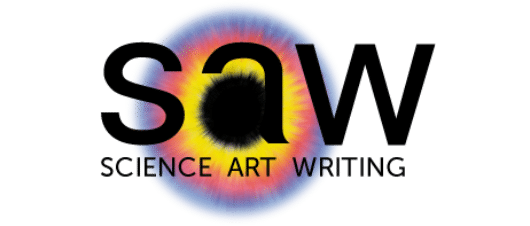The union of science, art, and writing around a central scientific theme represents a powerful way of bringing science into the classroom and breaks down barriers between science and the arts.
For a while now we have been working with UEA MRes student, Avouleance (Dennis Cook, they/them), on a social science project that seeks to assess the impact of the SAW approach on participants’ interest and understanding of science.
The beginning of this exciting project involved Avouleance joining the SAW team to analyse outputs and feedback from past SAW projects and then moved on to observing new SAW projects at West Earlham Junior School and returning to do follow-up interviews with participating students.
Here we catch up with Avouleance, whilst they are busy writing up their project.
Hi Avouleance, let’s start with you telling us a bit about yourself.
Sure! I’ve been a student at UEA doing different courses for about 10 years now.
A Natural Science Degree with Chemistry and Physics as majors, half a teacher training course, a Masters by Research (MRes) in Chemistry and I’m now studying for an MRes in Social Science Research Methods, specialising in Education with Professor Elena Nardi as my Tutor.
Wow. That’s a lot of study. What do you enjoy doing when you aren’t busy with your academic work?
As a hobby, I’m a poet, short story and scriptwriter, and I regularly contribute to the open mic scene in London. In terms of my art, I’m interested in exploring mental health conditions, specifically Autism, ADHD, Anxiety and Depression.
So, you’ve been working on a project with SAW for a while now. Can I ask how you came to hear about SAW?
A former housemate attended a SAW presentation and recommended I email Jenni, which I did.
Could you just tell us a bit about what you have been doing for this project?
I’ve been observing SAW activity days in school and interviewing participating students and the SAW delivery team. Specifically, scientist Hannah Hodgson, writer Richard Lambert and artist Chris Hann following a set of three “Plant Natural Product” school workshops.
And what is it you are hoping to achieve by conducting these observations?
I want to create a detailed description of what mixing science and the arts means, in the framework of the field of discourse analysis and explain how SAW sessions achieve this mixing. For example, what features of scientific discourses do students use in creating their art and poetry, and how does being involved in the SAW process encourage them to use these features?
Example excerpt from one of the interviews with the children:
“In science we were learning about, fungus, bacteria, germs, basically about plants and things that were bad for plants and that’s what we related to in our art and our writing. In art we were connecting Styrofoam balls and straws together to make like cells inside of a leaf. And we were painting a leaf as well. And also in writing we were learning, well actually, writing how to repel those germs, it was like really fun.”
Student, West Earlham Junior School.
What have you enjoyed most about the project so far?
It’s been lovely seeing students enjoy SAW’s work and seeing how the same science topics are expressed through different mediums.
We’ve reached the point in the project where you are analysing the data and writing the project up for possible publication. So looking ahead, is there any way you’d like to expand on the project?
As a grounded theory-based project it has allowed me to get general explanatory theory from a limited data set. I think knowing what I do now, as my project’s coming to its end, my natural reaction is that I’d like to do more of it.
However, one consequence of interviewing 8 to 10-year-olds is that their ability to express more nuanced ideas is limited. So I’d be interested in working with older children and expanding on their views about science before and after the session, since for now, my focus is purely on what happens during SAW sessions.
Thanks, Avouleance! We look forward to seeing your paper and have really enjoyed working with you.
You can follow Avouleance on Instagram @Avouleance
Main image, left to right: Avouleance, Dr Hannah Hodgson, Chris Hann (artist) and Richard Lambert (writer).

